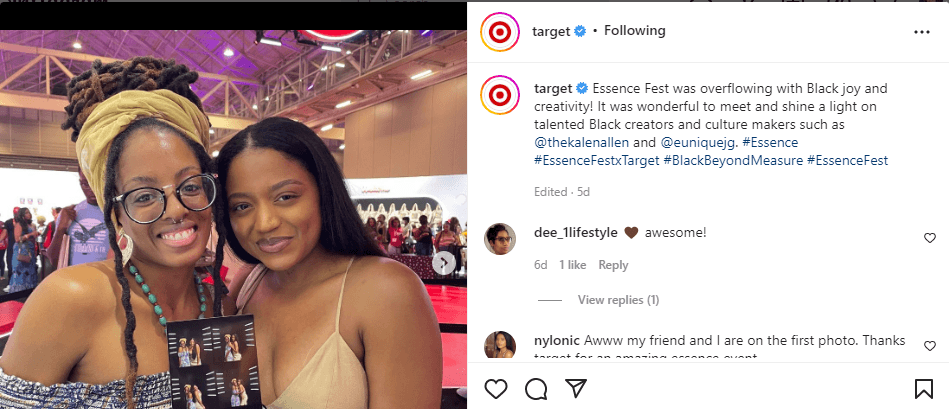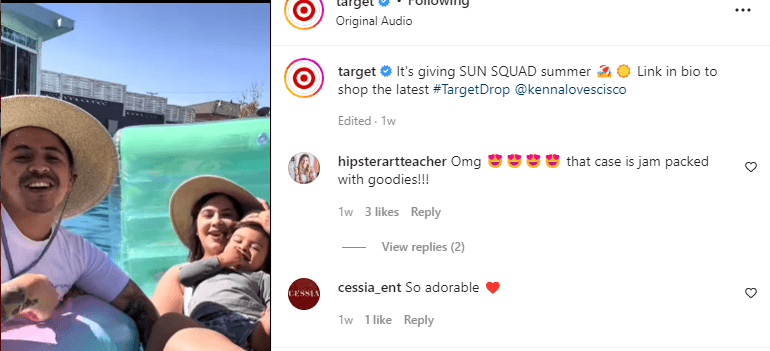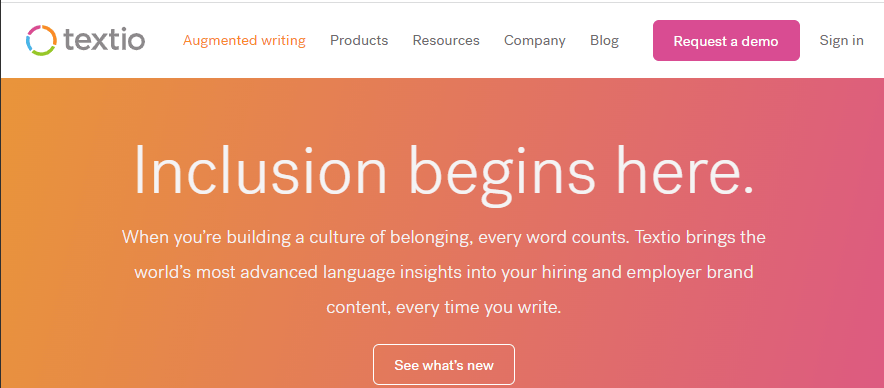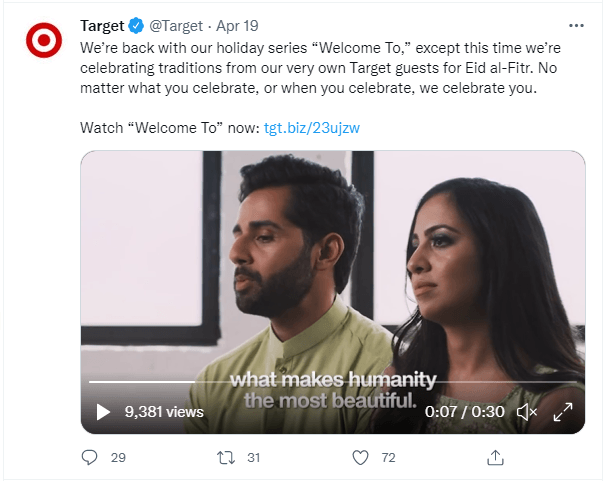-
 10 min. read
10 min. read
-
 Macy Storm
Macy Storm Content Marketing Consultant
Content Marketing Consultant
- Macy is a content marketing consultant with over five years of experience creating content for dozens of industries including home services, recreation, and education. She’s written about every marketing topic under the sun, from SEO to AI to email marketing. Her work has been featured by Search Engine Journal, HubSpot, Entrepreneur, Clutch, and more. In her free time, Macy enjoys crafting, reading comic books, and walking her dog Daisy.
Did you know that 85% of Latinx people were more likely to purchase a product after seeing a diverse or inclusive ad?
Or that 79% of Black people were likely to do the same?
Or that 79% of Asian/Pacific Islanders were likely to do the same?
It’s evident that diversity and inclusion are critical for helping you earn sales. People want to see marketing and promotions representing everybody and including everyone, so they know your product is for them.
Inclusivity marketing is a challenge, though. You want to appeal to everyone and make them feel included, but you also don’t want to pander or appear insincere.
If you want to figure out how to do diversity and inclusion in marketing the right way, keep reading to learn:
- What is inclusive marketing?
- Why inclusivity marketing matters
- How to do inclusive marketing (and what to avoid)
Keep reading to find out how you can start creating marketing that represents more of your target audience!
P.S. If you want more tips and tricks for marketing your business online, don’t forget to subscribe to Revenue Weekly! With over 200,000 savvy marketers already in the know, you don’t want to miss your opportunity to get more tips and tricks from the experts!
Inclusive marketing definition: What is inclusive marketing?
So, what is inclusive marketing? Inclusive marketing involves creating messaging and advertisements that share a message that fits multiple types of audiences. It’s the practice of creating messages that includes everyone regardless of age, gender, ethnicity, or sexual orientation.
Inclusivity vs. diversity: What’s the difference?
Now that you know the inclusive marketing definition, you may wonder how inclusivity differs from diversity. Many people use these terms interchangeably, but they don’t mean the same thing. It’s essential to know the difference so you can market appropriately.
Diversity in marketing is when you create messages that appeal to different groups of people. You equally represent multiple groups in your marketing to show you market to everyone.
Inclusion is the actions you take to show you welcome everyone. It involves actively taking steps to make people from different backgrounds feel like they belong to your brand.
Think of it this way: if you use stock photos that feature multiple types of people, you’re practicing diversity. You’re representing various groups and cultures by using those types of pictures throughout your website.
Practicing inclusion, on the other hand, involves actively practicing that diversity. You may do that by having people of color (POC) model your clothing at an event or having video testimonials from people of varying backgrounds endorse your products or services.

You can also foster inclusion through your workplace and staff. Having a team that includes people from multiple ethnicities and backgrounds is one great way to practice inclusion. Another is fostering inclusive practices in the workplace, like multi-cultural events.
To get the best results for your business, you’ll want to use a blend of diversity and inclusion in marketing your company.
Read More: How to Create Inclusive Content
Why inclusivity marketing matters: 3 benefits of diversity marketing
Now that we’ve covered the inclusivity marketing definition, it’s time to look at why diversity marketing matters.
Here are three big reasons to practice diversity and inclusion in marketing:
1. Diversity marketing helps you reach a bigger audience
If you aren’t currently practicing inclusive marketing, there’s a good chance you’re alienating a large chunk of your audience. You may deliver messages that only resonate with a small portion of who you want to purchase your products.
By practicing inclusivity, you appeal to more people who want your products. It’s an excellent way to reach more people in your target audience.
2. Diversity marketing helps you build brand loyalty and trust
People want to support brands that are diverse and inclusive of everyone. If you practice diversity and inclusion in your marketing, you’ll help build brand loyalty and trust.
If consumers see you make an active effort to be inclusive and promote diversity with what you offer, they’re more likely to trust your brand. Not only will those consumers feel heard, but they’ll also feel represented and valued as customers.
As a result, you turn interested prospects into valued customers who return to purchase from you.
3. Diversity marketing helps you earn more sales
When you practice diversity and inclusion in marketing, you earn more sales for your business. People want to buy from brands representing everyone, especially those in minority and underserved groups.
If your brand actively shows you’re inclusive and promote diversity, more people will want to purchase your products or use your services.

How to do inclusive marketing: The dos and don’ts of marketing diversely
We discussed the inclusive marketing definition and shared the benefits of using diversity in marketing. So, how can you put it into action?
In this next section, we’ll discuss the dos and don’ts of inclusive marketing. Let’s dive in:
DO: Take a look at your target audience
Before you start diving into inclusivity marketing, look at your target audience. You need to know who you’re targeting with your products or services so you can create messages that fit their needs.
First, look at your current customers. Who’s purchasing from you? You may find that there’s already some diversity in your customer base, and you can use that information to create more informed campaigns.
You’ll also want to look at prospects that didn’t become customers. This data can help you understand where your messaging may miss the mark for different groups.
By looking at your target audience, you’ll have a better idea of which groups you’re targeting, so you can create more inclusive messages to market to them.
DO: Represent multiple groups within your marketing
When looking at diversity and inclusion in marketing, you may think it only relates to POC. While POC are a critical component of your diversity marketing, you also need to consider other groups that are often underrepresented.
Some examples of those groups include:
- Members of the LGBTQIA community
- People with disabilities
- Women
All these groups are essential to represent in your marketing. When you craft your messages, keep all these groups in mind to ensure you deliver diverse messages.
DO: Use inclusive language in your marketing messages
When you create your inclusive marketing materials, you want to ensure that you use the right language. Inclusive language is critical to ensure you’re sending your audience the right messages.
When you use inclusive language, you avoid sharing biases, slang, or expressions that discriminate or are harmful to groups. These phrases and words can be based on someone’s gender, race, ability, or sexual orientation.
You want to ensure the language on your website and in your marketing materials is inclusive to everyone and doesn’t make anyone feel alienated.
Imagine if you create a promotional video and address the viewer by saying, “You guys are going to love this!” While you may not have meant it, using the term “guys” alienates the females watching your video.
So, as you create your marketing materials, keep your language in mind. You can use tools like Conscious Style Guide or Textio to help analyze your word choices to ensure you’re using inclusive language.

DO: Integrate inclusiveness throughout all your marketing campaigns
To promote your company’s inclusion, you need to integrate inclusiveness throughout your campaigns. You don’t want to have a few ad campaigns that practice inclusivity while your other marketing strategies stick to the old ways.
To fully embrace inclusivity and diversity in marketing, you need to use it throughout your campaigns. Whether you run social media ads or create content, your marketing materials should be diverse. You should promote your message of diversity throughout your marketing.

By doing so, you help promote the idea of inclusivity, no matter where your audience finds you online.
DO: Partner with diverse creators
If you’re using social media to promote your brand, you can integrate diversity and inclusion in your marketing by partnering with diverse creators. There are thousands of content creators that connect to diverse audiences interested in your products or services.
Connecting with these diverse creators is a great way for you to reach those audiences more effectively. If you and the creator are a good match, the creator will know how to angle your product to appeal to their diverse audience.
DON’T: Use stereotypes or generalizations in your marketing
When you do inclusivity marketing, don’t use stereotypes or generalizations in your marketing. Using stereotypes and generalizations is dangerous, as they often don’t apply to a large portion of your audience.
Not to mention, stereotypes and generalizations can be harmful and offensive to people.
A better approach is to understand what your audience likes and what appeals to them. You can use that as inspiration for how to get your marketing message across.
DON’T: Use cultural appropriation in your marketing
If you want your diversity marketing to turn out successful, you must ensure you don’t accidentally practice cultural appropriation. Cultural appropriation is when people in a majority group take cultural elements from a minority group.
A prime example of cultural appropriation is dressing in attire related to a culture. For instance, if a company celebrates Cinco de Mayo and posts pictures of people wearing sombreros and serapes, that’s cultural appropriation.
You need to ensure that you aren’t appropriating someone’s culture when you’re being inclusive.
DON’T: Market if you don’t mean it
One of the biggest “don’ts” on this list is that you shouldn’t market if you don’t mean it. You shouldn’t promote diversity and inclusion if you don’t mean it. You must be authentic in your presentation of inclusivity within your marketing and company.
Your audience will see through if you’re disingenuous about being inclusive. They’ll see you aren’t genuine in caring about diversity and won’t trust your brand.
When you make inclusivity part of your marketing, focus on how you can take a genuine and authentic approach to marketing your company online.
DON’T: Only practice inclusivity in your marketing
One of the biggest mistakes you can make with diversity and inclusion in marketing is only following those practices in your marketing. As the old saying goes, “If you talk the talk, you have to walk the walk.”
That means that if you’re discussing diversity and inclusion in your marketing, you must practice it within your company. While having a diverse team of workers is a start, you can take it a step further by having multi-cultural celebrations, setting language expectations, and providing resources to help educate your staff.
If you’re practicing inclusivity in your business, you’ll find it easier and more authentic to integrate inclusivity into your marketing genuinely.
Need help with inclusivity marketing?
Practicing diversity and inclusion in marketing is a worthwhile investment that helps you reach more of your target audience and make them feel connected to your brand. If you aren’t sure where to start with your diversity marketing, WebFX can help.
We have a team of over 500 digital experts that know how to craft campaigns that resonate with your audience. With over 29 years of experience, you can feel confident we’ll help you get the right message across to your audience.
Contact us online or call us today at 888-601-5359 to speak with a strategist about our digital marketing services!
-
 Macy is a content marketing consultant with over five years of experience creating content for dozens of industries including home services, recreation, and education. She’s written about every marketing topic under the sun, from SEO to AI to email marketing. Her work has been featured by Search Engine Journal, HubSpot, Entrepreneur, Clutch, and more. In her free time, Macy enjoys crafting, reading comic books, and walking her dog Daisy.
Macy is a content marketing consultant with over five years of experience creating content for dozens of industries including home services, recreation, and education. She’s written about every marketing topic under the sun, from SEO to AI to email marketing. Her work has been featured by Search Engine Journal, HubSpot, Entrepreneur, Clutch, and more. In her free time, Macy enjoys crafting, reading comic books, and walking her dog Daisy. -

WebFX is a full-service marketing agency with 1,100+ client reviews and a 4.9-star rating on Clutch! Find out how our expert team and revenue-accelerating tech can drive results for you! Learn more
Try our free Marketing Calculator
Craft a tailored online marketing strategy! Utilize our free Internet marketing calculator for a custom plan based on your location, reach, timeframe, and budget.
Plan Your Marketing Budget

Proven Marketing Strategies

Proven Marketing Strategies
Try our free Marketing Calculator
Craft a tailored online marketing strategy! Utilize our free Internet marketing calculator for a custom plan based on your location, reach, timeframe, and budget.
Plan Your Marketing Budget
What to read next





